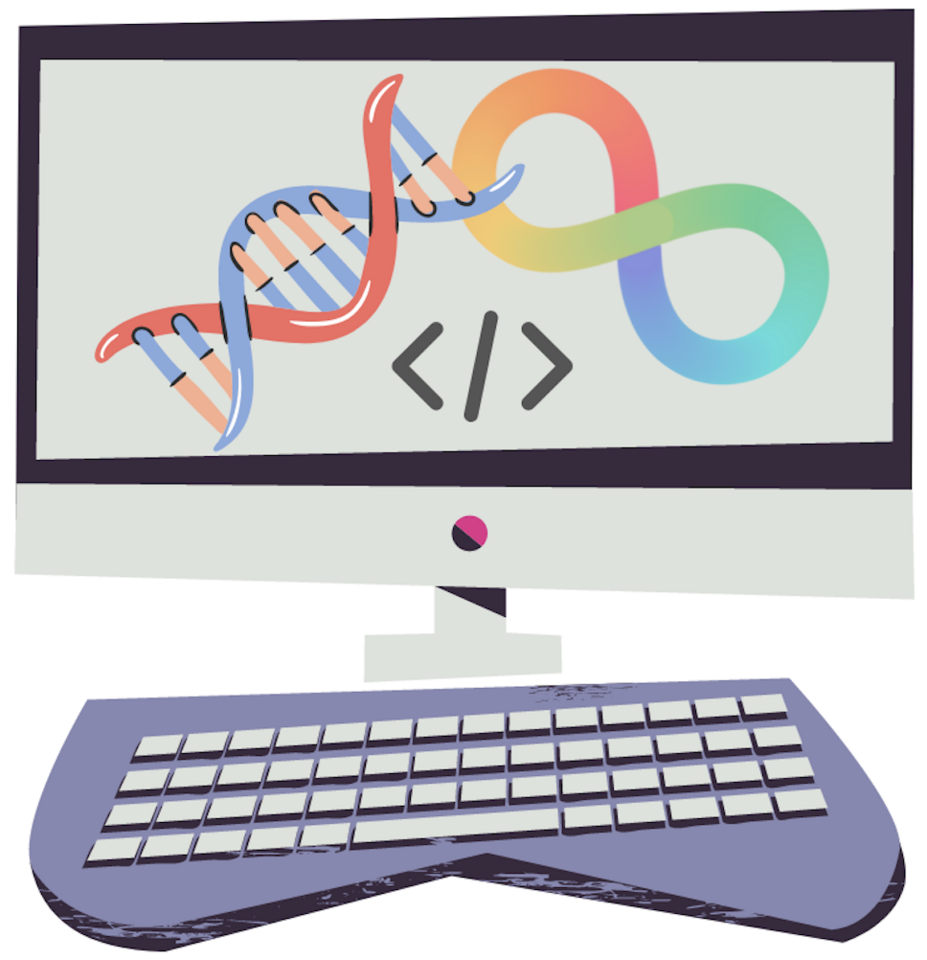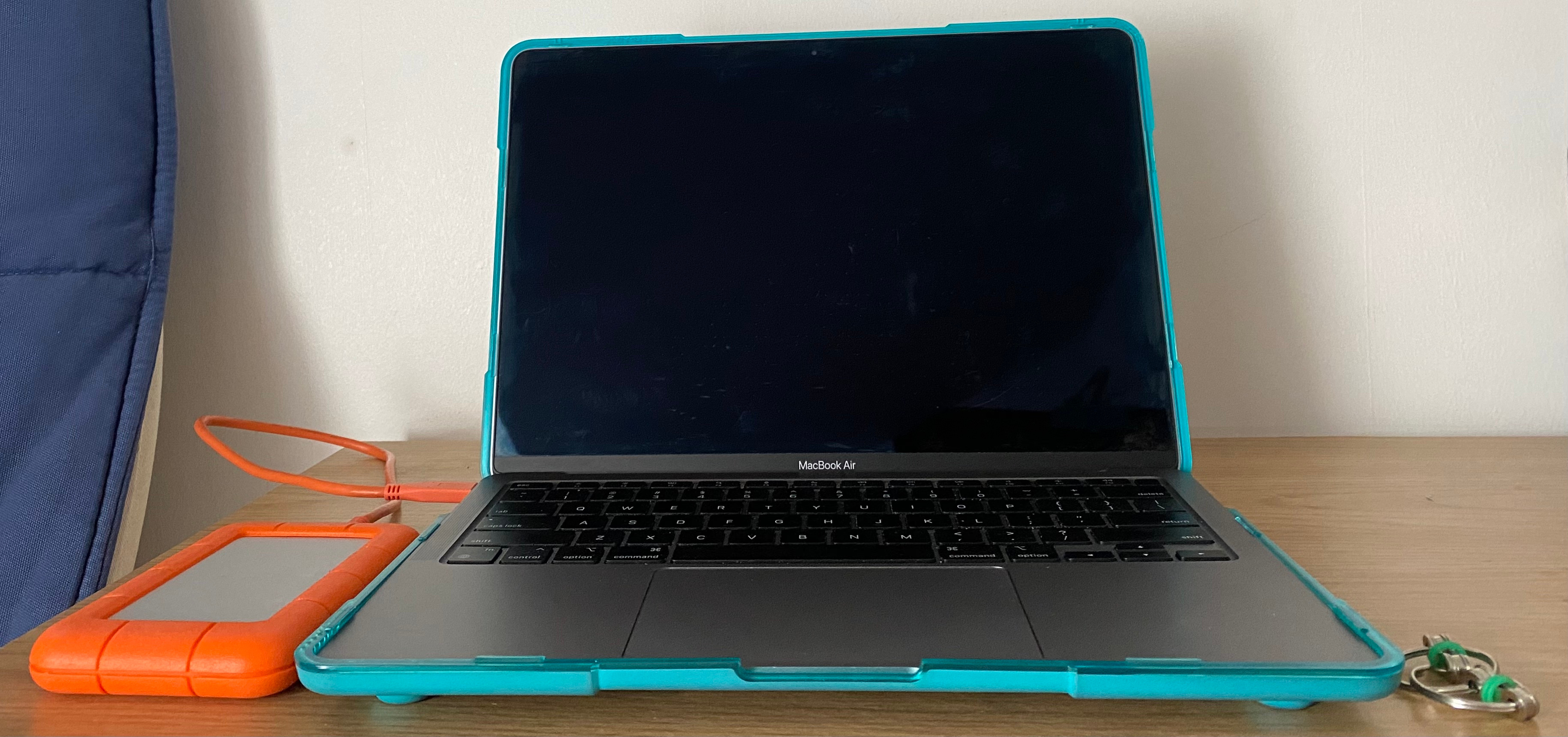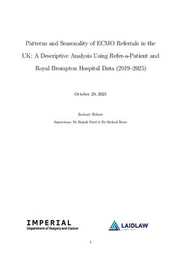Reflections on Computational Research from a Neurodivergent Brain


Pictured here is my set-up for my Laidlaw research project. On the left, my hard drive stores and backs up my work. My laptop contains the software, data, and information for my project. On the far right is my fidget toy. My research is a computational biology project. Without going into too much detail (I'll save that for the research essay), I am taking previously published biological data from other studies and using statistics, coding, and bioinformatics to analyse these data to investigate a new biological question about gene expression through a meta-analysis.
Based on this, the first two items might be expected for my work. The computer and hard drive are both tools I use to conduct my work. You might not have expected the last item, the fidget toy. The name "fidget toy" does not accurately represent its utility. It implies playing, distraction, and messing around. I have dyslexia and ADHD, and for me, my fidget is much more of a tool than a toy that aids with my focus. Over the years, in school and my first two years of university, I’ve become familiar with and in tune with how my neurodiversity affects my studies. I know my strengths and challenges as a student. But I am still in the early stages of my education with limited research experience. In the first two weeks of my Laidlaw research, I have been reflecting on conducting computational research with a neurodiverse brain. This blog post seemed like a fitting medium to discuss these reflections.
First, a small disclaimer - here, I will be sharing my personal experience, framed through my reflections on research as a neurodivergent individual. My experiences do not reflect the experiences of all neurodivergent people or researchers. The term "neurodiversity" is a fitting one because it implies variation among groups and individuals. Not all of my observations and reflections may be directly related to my neurodiversity. It is hard to attribute because my brain has always been dyslexic, and had ADHD. My intent with this blog is only to reflect on my own experiences.
Research Question
"Is there a difference in the correlation between mRNA expression and protein expression in differentially expressed genes vs non-differentially expressed genes?" is my research question. At the beginning of my first week, I struggled to figure out where to start. I noticed I was trying to answer the whole question at once. I was trying to find information and answers about every component of the question simultaneously. Once I noticed what I was doing, I knew I needed to break it down into smaller, more manageable questions that feed into the bigger question.
Task prioritisation is a common challenge with ADHD. Often each task seems equally important. Being new to research, I do not have much previous experience to draw upon to assign priority. But in doing research, especially in the short time scale, prioritisation of tasks is important to make progress. My supervisor has been a great resource in helping me prioritise tasks in the research.
Day-to-Day
Throughout my first two weeks, I have realised that there is a difference between completing university work and conducting my Laidlaw project when it comes to the day-to-day schedule and routine. I have developed a routine for university work that works for my brain. With my Laidlaw work, I have had to figure out what works with my ADHD and dyslexia within a structure I haven’t worked in before. Because my project is computational, my work is almost entirely done on the computer. It is remarkable that technology has progressed to where I have the resources to conduct my research project all on my laptop. In theory, I can work from any place as long as there is WIFI and a power outlet to charge my computer. However, this flexibility can lead to a lack of structure, which can be overwhelming. It's different from the university semester, where lectures, tutorials, and labs to attend.
There is a general structure that I work within. I have regular meetings with my supervisor and talks to attend as part of the Laidlaw program. This still leaves many hours in the day to work, and at first, figuring out my general day-to-day workflow was challenging. After the first week and a half, I am still working on developing a routine that works for me, but I am making progress in this area. I have started implementing some strategies to give me a clear direction each day. For example, writing weekly goals and then breaking these down into smaller daily goals. Importantly, I have been careful to be realistic with these goals and kind to myself, understanding that roadblocks and challenges are part of the research process. It is okay if some tasks take longer than anticipated. I have also been writing notes throughout my day on what I have worked on, accomplished, challenges, and questions. This has helped me reflect on my work and keep track of my progress.
Reading
A significant component of any research is reading, which can be challenging with dyslexia. For my project, I need to read journal articles for background information, potential datasets, and information about statistical methods. This leads to tabs and tabs of articles to be read, piled like library books. I am not the fastest reader, especially the often jargon-filled academic reading. Over these first two weeks of Laidlaw research, I have realised that I cannot read and understand every word of every paper I click on - nor do I need to. I have started going into every article with clear intent, a goal of what I am trying to find, and what questions I am trying to answer. Reading with purpose has helped me gain more value from each article and has made each paper less daunting. Focusing during reading can also be a challenge. Reading with intent does help with this, but it is also helpful for me to have a fidget. It gives my hands something to do, so my brain can take in and process what I am reading. These tools do not magically make me a faster reader. However, they help me gain more value from what I read and help tackle the overwhelm that comes from many academic readings.
Final Reflections
During university work, there is a system in place with set classes, assignments, schemes, and requirements. As a neurodivergent student, I work and organise to best function within the set system. With my Laidlaw research, there is also a set system, but it is more broad. During these first two weeks of my Laidlaw research, I have realised that this is a unique opportunity for me to create a system tailored around how I best work and think - rather than learning to work within another system. For example, changing the fonts on spreadsheets and documents to Comic Sans because it is a more dyslexia-friendly font. Setting up my day and workflow in a way that best matches how my energy ebbs and flows during the day optimises the strengths that come from my dyslexia and ADHD. Of course, some of these are adjustments I can make during the academic term, but the flexibility from the nature of my computational project has made me realise this and helped me gain a deeper understanding of how I work best.
Acknowledgements
I'd like to thank my supervisor, Dr Anne Smith, for her support and guidance throughout my project. I'd also like to thank the Laidlaw Foundation and Lord Laidlaw for this incredible opportunity to participate in the Laidlaw Scholars program.





Please sign in
If you are a registered user on Laidlaw Scholars Network, please sign in